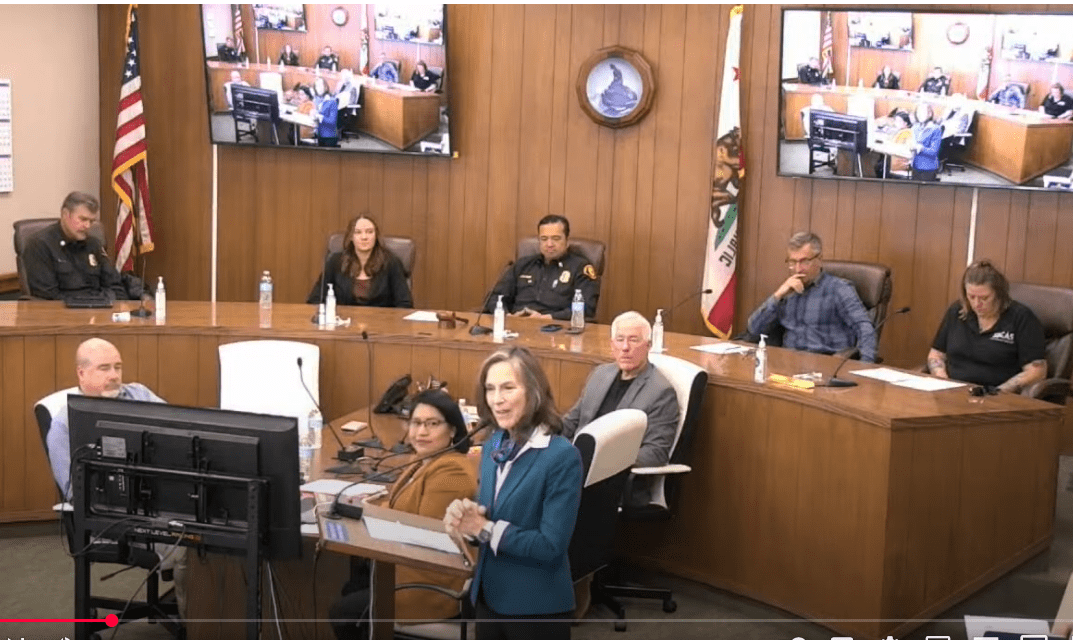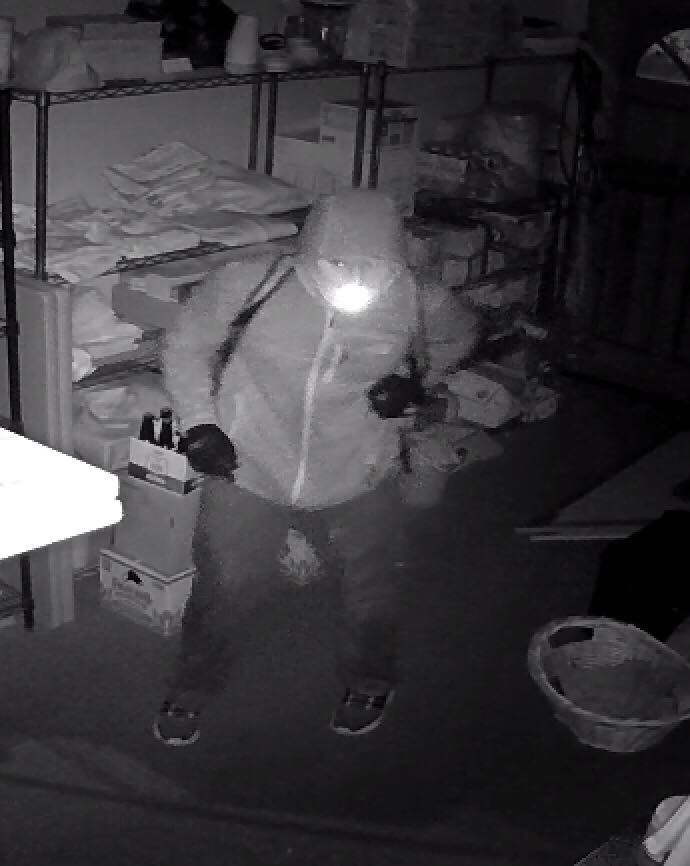Supervisor Joan Hartmann urges neighborhoods to get together and form action plans
With the recent devastating fires in Pacific Palisades and Pasadena still fresh in everyone’s minds, the steps to protect one’s home and property from wildfires becomes more and more important.
With that thinking, Santa Ynez Valley residents attended a public meeting to address fire safety and preparedness, co-hosted by Santa Barbara County 3rd District Supervisor Joan Hartmann, Buellton Mayor David Silva. and Solvang City Councilmember Elizabeth Orona on March 31 at the Solvang City Council chambers.
With other local leaders from the Valley present, the meeting had fire personnel and county evacuation experts on the panel to give presentations and answer questions from the audience on fire safety and prevention.
Orona opened the meeting by welcoming everyone and noting that the meeting was held for local residents to be “more aware, more informed, and more prepared” for potential wildfires in the area.”
“Not that we weren’t already conscious of it, but it is important for intercommunities to be coordinated and planning our reponses,” Orona said. “Fire safety and fire abatement is most effective when we work together and follow programs.”
Silva then spoke and urged to practice preparedness for not only fires, but other emergencies.
“Even smaller emergencies can cause havoc,” he said. “Buellton’s a commuter city, and if an emergency happens here at the wrong time, you could be miles away. That’s why you need to be proactive in the neighborhood; emergencies aren’talways going to be with a FEMA element attached to it.”
Hartmann then spoke and delivered a message that would set the tone for the evening: “Resilience is built on relationships, and having social connections gives you a better chance for survival.”
She then introduced Santa Barbara County Fire Marshal Fred Tan, who said that the key for residents is to maintain fire mitigation by keeping vegetation clear around one’s property, and that the county is doing its part in that.
“We take a lot of action in this county, my deputy fire marshal, Vince LaRocco, is the backbone of the mitigation,” Tan said. “We’ve conducted the Spalding-Midland burn, a roughly 1,600-acre project that creates about a 10-year buffer to protect the communities and next year we’re planning the Sedgewick burn, which should help clear more vegetation and keep us safer from wildfires.”
After Tan spoke, Hartmann then introduced Anne-Marie Parkinson, the executive director of the Santa Barbara County Fire Safe Council, for which Hartmann is a board member. The Fire Safe Council works with fire agencies to reduce risk, and also with neighborhoods, encouraging them to collabarate on fire prevention and mitigation.
Parkinson spoke to the audience about Firewise USA, a program that provides collaborative framework to help neighbors, get organized, understand risk, and work together to decrease wildfire risk. She began her presentation by showing a video of actor James Woods recounting how he saved an elderly neighbor after authorities lost track of him during an evacuation.
“I got chills seeing that, because that is the whole point of Firewise,” Parkinson said. “That man was rescued because the neighbor [Woods] knew him, knew where he was, knew his son’s number, and the man is alive because of that.”
She then went on to say the county had 30 Firewise communities in Santa Barbara County and were looking for more, hoping to have the whole county under the program. The Firewise program promotes creating a committee, identifying boundaries and risk assessments, and putting together an action plan.
Hartmann then proposed a Firewise community be formed in the Santa Ynez Valley and eventually link it to others in the county.
“We’re working on a Firewise community in Lompoc, and we just finished one on the Gaviota coast,” she said. “Having one in Santa Ynez Valley can help bridge the effort to be ready for fires.”
The next speaker was Sara Aguilar, director of animal services for Santa Barbara County, who advised on the evacuation of animals during a fire.
Emergency time is short options shrink immediately,” she said. “You can’t just load your animals in a car, or take them to a hotel. Saving animals can be risk to human lives. The key is to have a plan for evacuation.”
Aguilar also provided a QR code for a livestock registry that can be used so those with the county who are evacuating your animals know the particular and eliminate any confusion at your property. She also suggested an evacuation practice at night to make sure you can load your animal and get out quickly. She said if you can do that at night, it will be much easier during the day.
After the speakers were done, the floor was opened for questions and comments from the audience.
The first audience member pointed out that air support is important for fighting fires, but that the county is currently working with “Vietnam-era helicopters” that need to be upgraded.
“It cost money, but the investment is important, and we have people in this area with money,” the man said. “If the chiefs bring the proposal forward, we’ll support you.”
That speaker also proposed more night capabilities for aircraft, when the conditions were better, and also said partnering with the Chumash Fire Department could also be beneficial.
Another audience member pointed out the shortage of roads to get out of Valley towns during a fire or other catastrophe.
“We have one road in and one road out: I don’t get how it can work,” she said. “We can’t get out on the 4th of July, how will we get out if there’s a fire? where’s the infrastructure?”
To that end, Tam urged an early warning notificiation, and for the people to be self-aware and leave early if they feelthey need to instead of waiting for officials to order them out.
“We’re phasing in an evacuation plan,” he said. “It’ll be a challenge, but with early detection, we should do OK.”







